Seasonal Affects: Films of Jonathan Schwartz
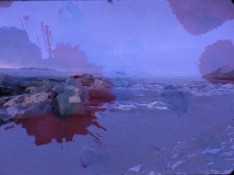
The Crack Up (2017, 16mm->digital video, color, sound, 18:18)
Sunday February 18, 2024, 7:30 pm
At 2220 Arts + Archives, 2220 Beverly Blvd., Los Angeles CA 90057
In person introduction by Irina Leimbacher, Visiting Professor, Cal Arts
Tickets: $15 general, $8 students/seniors, free for Filmforum members
At https://link.dice.fm/Tbf0a9ad9fd9
Jonathan Schwartz made films as he lived his life. His short works are gestures of appreciation and awe towards the world and for those he loved. They are often also dialogs with texts and ideas he found compelling. In all his 16mm films, he gives expression to both the beauties of the concrete and the transience and potency of ineluctable time. A flower, a face, melting ice, a shift in light — Jonathan’s lens holds them with generosity and care, for his and our gaze. Time becomes a palpable preoccupation through his filming of the seasons and their variations, and in his own cinematic processes. These include his physical movements with the camera and the in-camera winding and re-winding of filmstock to embody both his and the world’s fortuitous memory.
Seasonal Affects is a program of nine of Jonathan’s films, made between 2005 and 2018. We move between a collage of flowers in For Them Ending (2005) to the camera rolls in Three Miniatures (2014), to the observational simplicity and beauty of New Year’s Sun (2010). Two of his travel films are included: Den of Tigers (2002) which was his first film shot in India when he was working with Mark Lapore, and Nothing is Over Nothing (2008) depicting a personal journey to Israel. Several of the films are lyrical or philosophical responses to cherished places, moments, and people in rural Vermont and New Hampshire, the area in which he lived, including If The War Continues (2012), Animals Moving to the Sound of Drums (2013), and A Leaf is the Sea is a Theater (2017). His final completed film, The Crack-Up (2018) is an excursion through fear and transformation, a meditation on personal and planetary crises shot mainly in Iceland. Raw and sublime, it asserts the vulnerability and uncertainty of our human hold on identity, on life, on time.
Jonathan Schwartz (1973-2018) was a much-loved filmmaker, an inspiring teacher, and a whimsical and witty friend. His unique16mm films incorporate handheld gestures, in-camera superimpositions and an acute attention to the transient qualities of the world. Whether shot near his home in Vermont or during cinematic journeys to India, Israel, Turkey or Iceland, his work embodies a devotion to the ephemerality of external worlds and a responsiveness to profound and shifting internal states. Incorporating fragments of poetic texts (by writers such as Cormac McCarthy, Susan Howe, Rajesh Parameswaran, James Tate, F. Scott Fitzgerald) or eschewing words altogether, the films both lacerate and console us as they move between sorrow and delight, despair and exultation.
Jonathan studied and worked at Massachusetts College of Art, taught courses at the School of Museum of Fine Arts, Bennington College, and was Associate Professor in the Film Department at Keene state College from 2008-2018. His films have screened nationally and internationally, including at the New York and Ann Arbor Film Festivals, the Brakhage Center Symposium, Images in Toronto, the Austrian Film Museum. A full retrospective was shown at the Punto de Vista Film Festival in Spain in 2019.
Program and Notes by Irina Leimbacher, Jonathan’s friend and colleague
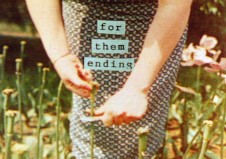
For Them Ending
For Them Ending
2005, 16mm, color, sound, 3 min.
...a poem made of imagery from a gardening volume, a book of flower prints, and the sound of a firework display. The images of the colored flowers, when added to the sound of pyrotechnics, become a graphic representation of exploding buoyancy. Like in a Lewis Klahr film, the images appear to collage a story-driven narration. There is motion created by the succession of cuts, and by the hand-handled camera movements so essential to Schwartz's style--allowing a non-aggressive, handcrafted, and detail-oriented approach to the world. Movement is more essential than any possible tale. The camera follows the shape of printed instructions, drawing verses in the air. The vivid texture and colors of these images transform the ink into trails of meaning, ways to translate inner subtleties into corporeal nature. - Monica Saviron
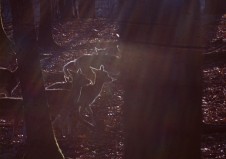
Animals Moving to the Sound of Drums
2013, 16mm, color, sound, 8 min,
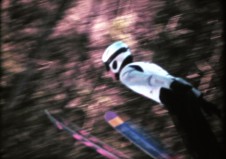
If the War Continues
If the War Continues
2012, 16mm, color, sound, 5 min.
Drawing and writing are at the core of if the war continues (2012), a film with a hypnotizing sense of diagonal light and movement. The title refers to the 1917 Hermann Hesse short story, part of his collection of fairy tales, which ends:
"and before I could be noticed again and taken to task, I spoke to the tiny blessed star within me, shut off my heartbeat, made my body disappear into the shadow of a bush, and continued my previous voyage without thinking about returning home ever again."
Hesse, a passionate public enemy of the Great War, describes in the foreword of this collection of writings his belief in salvation via "the Inward Way":
"I strive to guide the reader not into the world theater with its political problems but into his innermost being, before the judgment seat of his very personal conscience."
This motto seems to directly relate to Schwartz's artistic sensibilities. His films are made of inner movement, rather than outsider interpretive assessments. In if the war continues, men and women ski jump from a three hundred and seventy-four feet high ramp, soaring throughout the gelid air of Vermont, where Schwartz lives. Jumpers move from right to left like the carriage return of a typewriter, while the landscape and rays of sunlight thrust lines in the opposite direction. The somehow nostalgic, slowed-down editing of the images contrasts with the preeminence of pounding sound, accompanied by a degraded, almost unintelligible narration from a cassette tape about the life and work of the German writer. As Schwartz points out, the soundtrack shares some similarities with Popul Vuh's electronic score at the opening of Werner Herzog's The Great Ecstasy of the Sculptor Steiner (1974). This sound has the quality of a forgotten mantra or a robotic plea. The repeated motion swerves towards Nietzsche's idea of eternal return: the temptation and fascination of going back to the origins by jumping away. - Monica Saviron
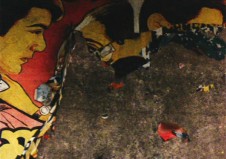
Den of Tigers
Den of Tigers
2002, 16mm, color, sound, 19 min.
"an invitation to walk look listen. West Bengal, India. collected, or pretend to." - JS
Den of Tigers (2002), by Jonathan Schwartz, lyrically examined the subtle textures of daily life in West Bengal, India. There you could see ankles lifting up and back down into a flooded street, a small ancient woman pushing on the arm of a water pump, and the hypnotic swinging of a young tightrope walkers hips, the image as taut as the narrow rope pressed to her feet. - Genevieve Yue
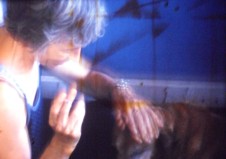
Nothing is Over Nothing
2008, 16mm, color, sound, 16 min.
Schwartz scrutinizes the city [of Jerusalem] and its inhabitants, sometimes from a very close vantage, other times from afar, but always with a feeling of respect and belonging. The audio recordings are sometimes suddenly interrupted, as the images are separated by a few seconds of black. These silences incorporate into the film a Beckettian awareness of the ungraspable, the unnamable, of the tension between sharpness and blurriness, revealing and concealing, restraining and releasing. The other is and will always be an intimate stranger, and the camera is there to come to terms with this reality. The film has the ephemeral delicacy of a love song to the other. Though similar in formal approach, Schwartz's film is a more romanticized experience than the acute cinematic work that filmmaker Larry Gottheim created in Machete Gillette...Mama (1989, 1991) after visiting the Dominican Republic. Ethnology is sifted through subjectivity, and travel follows a sentimental map, up to the unknown, where melodies help us remember, faces stare in silence, and architecture suits passing time. There is also a dissociation of image from audio--surrounded by sounds from the Jordan River, the Mediterranean Sea, the radio, the street markets, vinyl records, and nonchalant conversations, Schwartz develops a relationship with the world, but also with himself and his own creative process. In 2001 Schwartz traveled to Calcutta with his dear friend and mentor, filmmaker Mark LaPore, who Schwartz assisted in recording the sound for the film Kolkata: "From that experience I think I learned to respect the world when filming or recording, or looking and listening," he explained. - Monica Saviron
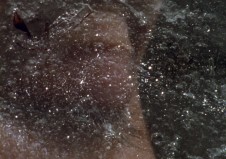
A Set of Miniatures
A Set of Miniatures
A Certain Worry, (an aging process), A Kind of Quiet
2014, 16mm, color, sound, 9 min.
a kind of quiet situated amid the in between of ascending and descending. it seems hard to land and when this happens something else might disappear. an aging process located in the peonies blooming and in the early summer river and in the light that falls across playful bodies. a certain worry enveloped in the covering of the ground, illuminated around a face, light on something ferocious, touch upon something gentle. – JS
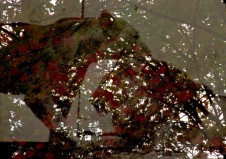
A Leaf is the Sea is a Theater
A Leaf is the Sea is a Theater
2017, 16mm to digital, color, sound, 17min.
Los Angeles premiere
'Facts are perceptions of surfaces.' - Susan Howe
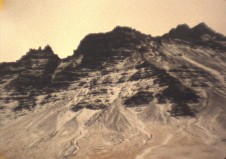
The Crack Up
The Crack Up
2017, 16mm->digital video, color, sound, 18:18
Los Angeles Premiere
"The ability to hold two opposed ideas in the mind at the same time, and still retain the ability to function. One should, for example, be able to see that things are hopeless and yet be determined to make them otherwise." (F. Scott Fitzgerald: The Crack-Up, 1936)
...an excursion through fear, near collapse, and transformation that takes its name from F. Scott Fitzgerald's 1936 autobiographical essay. Reflecting on life's "process of breaking down," it is both extremely personal and also relevant to the difficult times we live in. With sublime 16mm footage of glaciers, monumental snow-covered landscapes, and an icy, roiling sea, The Crack-Up alternates strident sounds and brash rhythms and gestures of the camera with moments of arresting fragility and grace. Danger, death, the unexpected chaos and destruction of life are all evoked with almost no human presence in the image. The sound of wind, rain, the cracking of frozen earth occasionally gives way to two voices: a female voice reciting from Fitzgerald's text and a male voice struggling to use language at all. Schwartz's film seems to take as its challenge Fitzgerald's admonition to simultaneously "see that things are hopeless and yet be determined to make them otherwise." - Irina Leimbacher
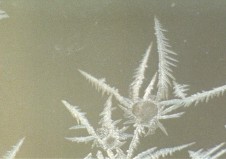
New Year Sun
New Year Sun
2010, 16mm, color, sound, 3 min.
...in which Schwartz approaches light traveling through water in all its forms. His macro lens strives to get closer to the essence, to the transparency of things, and yet, the tenebrous and doomed cry of a church's bell, and the ascending, unstoppable pitch that accompany the images end up close to the sound of a derailed train--and the unfocused, unclear vision that comes with it. - Monica Saviron
